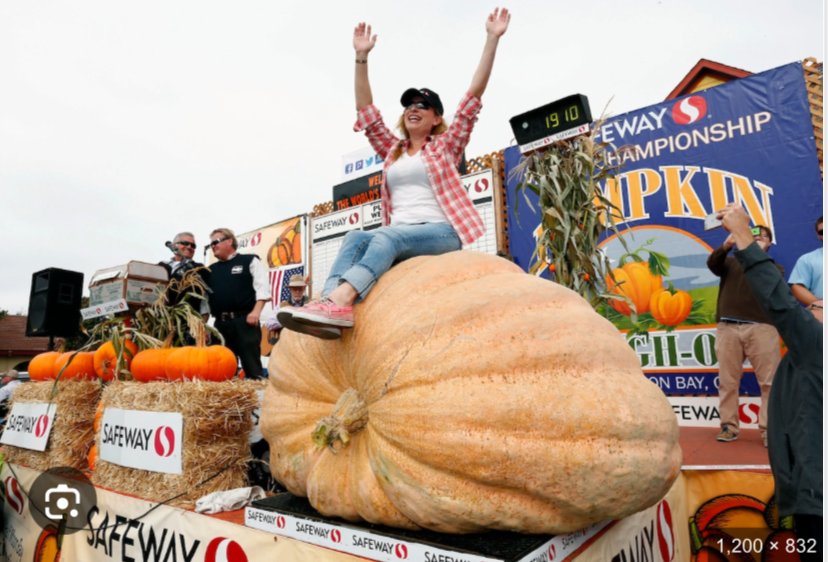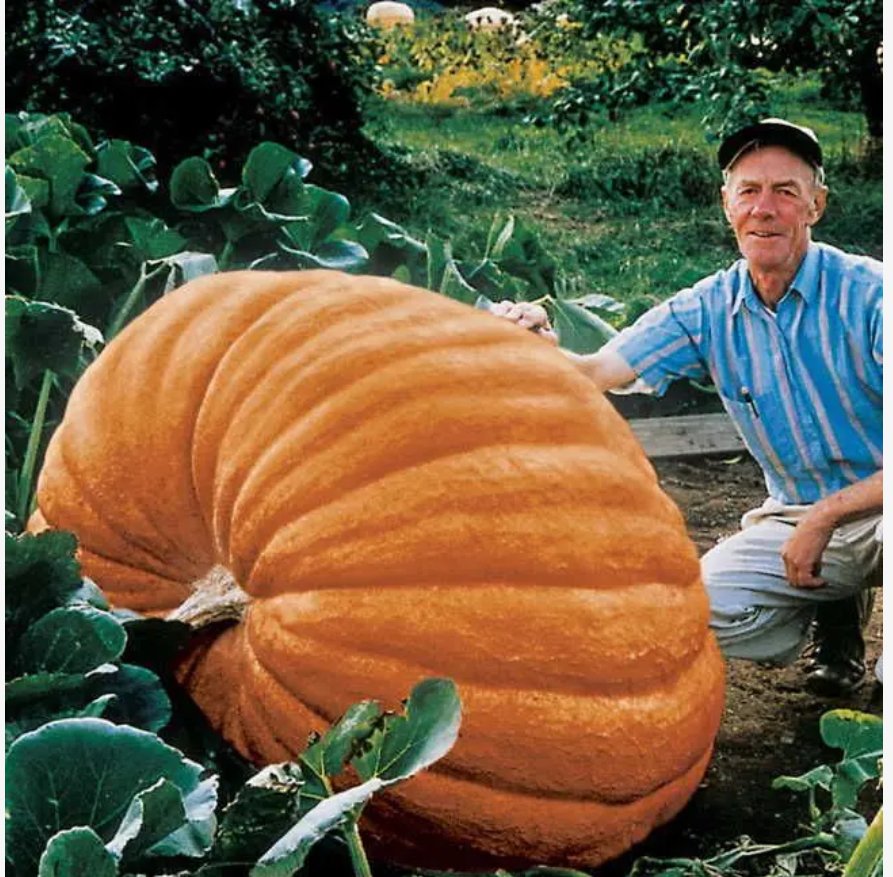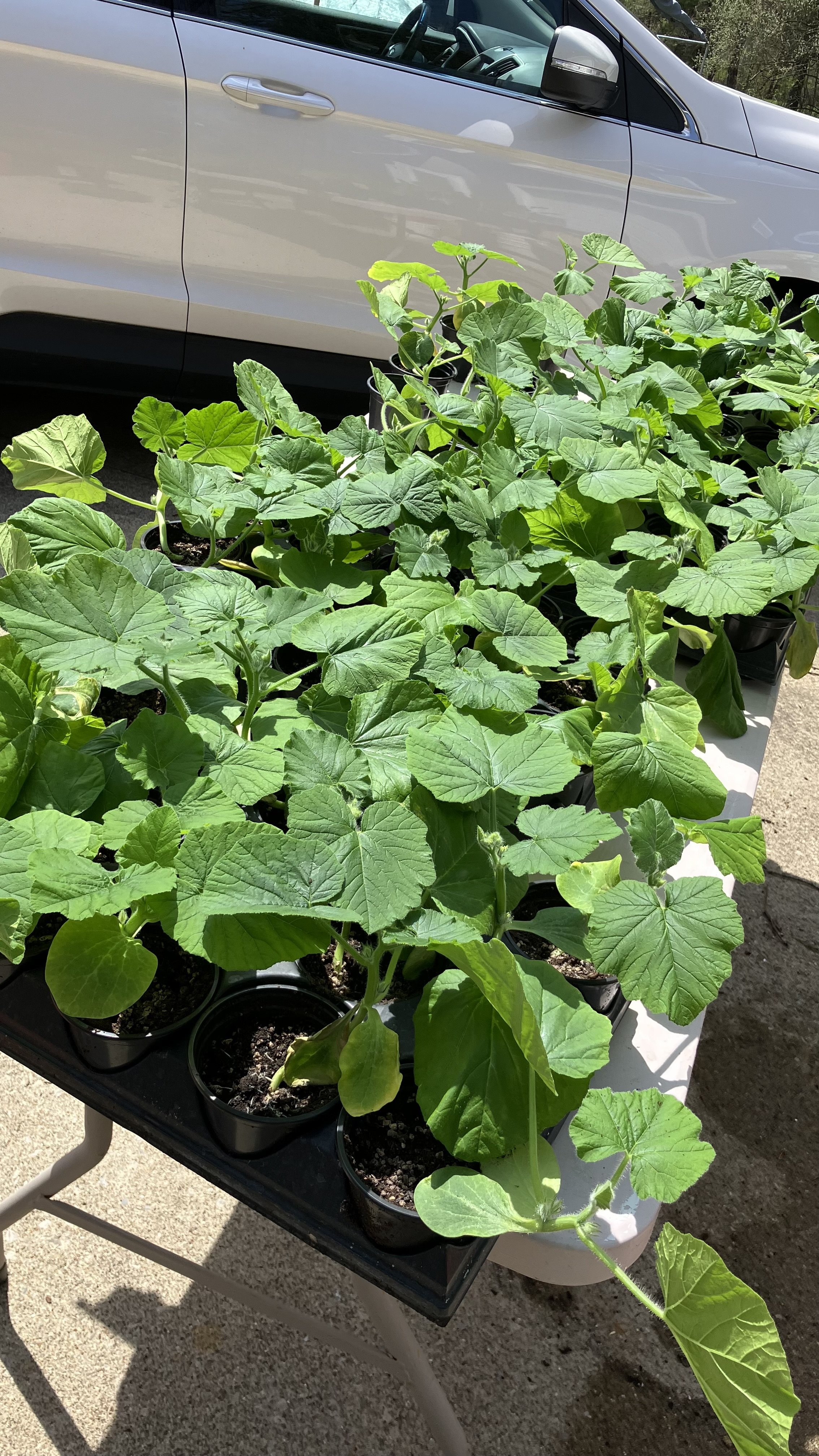 Image 1 of 4
Image 1 of 4

 Image 2 of 4
Image 2 of 4

 Image 3 of 4
Image 3 of 4

 Image 4 of 4
Image 4 of 4





Giant Pumpkin Plant (Growalong)
Who wants to grow some giant pumpkins?! We have started dozens of Dill’s Giant Pumpkins for our first High Desert Greens Giant Pumpkin Growalong! We want to see who in our community can grow some massive pumpkins! Maybe enter them into a fair? Have bragging rights! Confuse your neighbours!
Here is some growing advice for your giant pumpkins!
🌱 Planting and Site Preparation
Space Requirements: Allocate at least 400 square feet per plant, as vines can extend 20–30 feet.
Soil Preparation: Use well-drained, fertile soil rich in organic matter. Incorporate compost or aged manure to enhance nutrient content.
Planting Time: In Ohio, start seeds indoors in late April and transplant outdoors after the last frost, typically in mid to late May.
💧 Watering and Mulching
Watering: Maintain consistent soil moisture by watering every 1–2 days, especially during dry periods.
Mulching: Apply straw or leaf mulch to retain moisture, suppress weeds, and prevent soil-borne diseases.
🌿 Vine Management
Pruning: Remove tertiary vines to direct the plant’s energy toward fruit development.
Burying Vines: Cover sections of the vine with soil to encourage additional root growth, enhancing nutrient uptake.
🌼 Pollination and Fruit Selection
Pollination: Hand-pollinate flowers to ensure fruit set and control the timing of fruit development.
Fruit Selection: Limit each plant to one or two fruits to concentrate resources and achieve larger sizes.
🌿 Fertilization
Nutrient Needs: Giant pumpkins require substantial nutrients. Apply a balanced fertilizer, such as a 10-10-10 NPK, and supplement with compost or worm castings.
🐛 Pest and Disease Management
Common Pests: Watch for squash vine borers and apply appropriate controls if detected.
Disease Prevention: Ensure good air circulation and avoid overhead watering to reduce the risk of fungal diseases.
📏 Monitoring Growth
Growth Rate: Under optimal conditions, pumpkins can gain up to 30 pounds per day.
Support: Place pumpkins on a wooden pallet or sand to prevent rot and facilitate movement if necessary.
🧪 Harvesting and Storage
Harvest Timing: Harvest when the pumpkin’s skin is hard and resists puncture from a fingernail.
Storage Conditions: Store in a cool, dry place with temperatures around 50–55°F and relative humidity of 50%.
Who wants to grow some giant pumpkins?! We have started dozens of Dill’s Giant Pumpkins for our first High Desert Greens Giant Pumpkin Growalong! We want to see who in our community can grow some massive pumpkins! Maybe enter them into a fair? Have bragging rights! Confuse your neighbours!
Here is some growing advice for your giant pumpkins!
🌱 Planting and Site Preparation
Space Requirements: Allocate at least 400 square feet per plant, as vines can extend 20–30 feet.
Soil Preparation: Use well-drained, fertile soil rich in organic matter. Incorporate compost or aged manure to enhance nutrient content.
Planting Time: In Ohio, start seeds indoors in late April and transplant outdoors after the last frost, typically in mid to late May.
💧 Watering and Mulching
Watering: Maintain consistent soil moisture by watering every 1–2 days, especially during dry periods.
Mulching: Apply straw or leaf mulch to retain moisture, suppress weeds, and prevent soil-borne diseases.
🌿 Vine Management
Pruning: Remove tertiary vines to direct the plant’s energy toward fruit development.
Burying Vines: Cover sections of the vine with soil to encourage additional root growth, enhancing nutrient uptake.
🌼 Pollination and Fruit Selection
Pollination: Hand-pollinate flowers to ensure fruit set and control the timing of fruit development.
Fruit Selection: Limit each plant to one or two fruits to concentrate resources and achieve larger sizes.
🌿 Fertilization
Nutrient Needs: Giant pumpkins require substantial nutrients. Apply a balanced fertilizer, such as a 10-10-10 NPK, and supplement with compost or worm castings.
🐛 Pest and Disease Management
Common Pests: Watch for squash vine borers and apply appropriate controls if detected.
Disease Prevention: Ensure good air circulation and avoid overhead watering to reduce the risk of fungal diseases.
📏 Monitoring Growth
Growth Rate: Under optimal conditions, pumpkins can gain up to 30 pounds per day.
Support: Place pumpkins on a wooden pallet or sand to prevent rot and facilitate movement if necessary.
🧪 Harvesting and Storage
Harvest Timing: Harvest when the pumpkin’s skin is hard and resists puncture from a fingernail.
Storage Conditions: Store in a cool, dry place with temperatures around 50–55°F and relative humidity of 50%.
Who wants to grow some giant pumpkins?! We have started dozens of Dill’s Giant Pumpkins for our first High Desert Greens Giant Pumpkin Growalong! We want to see who in our community can grow some massive pumpkins! Maybe enter them into a fair? Have bragging rights! Confuse your neighbours!
Here is some growing advice for your giant pumpkins!
🌱 Planting and Site Preparation
Space Requirements: Allocate at least 400 square feet per plant, as vines can extend 20–30 feet.
Soil Preparation: Use well-drained, fertile soil rich in organic matter. Incorporate compost or aged manure to enhance nutrient content.
Planting Time: In Ohio, start seeds indoors in late April and transplant outdoors after the last frost, typically in mid to late May.
💧 Watering and Mulching
Watering: Maintain consistent soil moisture by watering every 1–2 days, especially during dry periods.
Mulching: Apply straw or leaf mulch to retain moisture, suppress weeds, and prevent soil-borne diseases.
🌿 Vine Management
Pruning: Remove tertiary vines to direct the plant’s energy toward fruit development.
Burying Vines: Cover sections of the vine with soil to encourage additional root growth, enhancing nutrient uptake.
🌼 Pollination and Fruit Selection
Pollination: Hand-pollinate flowers to ensure fruit set and control the timing of fruit development.
Fruit Selection: Limit each plant to one or two fruits to concentrate resources and achieve larger sizes.
🌿 Fertilization
Nutrient Needs: Giant pumpkins require substantial nutrients. Apply a balanced fertilizer, such as a 10-10-10 NPK, and supplement with compost or worm castings.
🐛 Pest and Disease Management
Common Pests: Watch for squash vine borers and apply appropriate controls if detected.
Disease Prevention: Ensure good air circulation and avoid overhead watering to reduce the risk of fungal diseases.
📏 Monitoring Growth
Growth Rate: Under optimal conditions, pumpkins can gain up to 30 pounds per day.
Support: Place pumpkins on a wooden pallet or sand to prevent rot and facilitate movement if necessary.
🧪 Harvesting and Storage
Harvest Timing: Harvest when the pumpkin’s skin is hard and resists puncture from a fingernail.
Storage Conditions: Store in a cool, dry place with temperatures around 50–55°F and relative humidity of 50%.